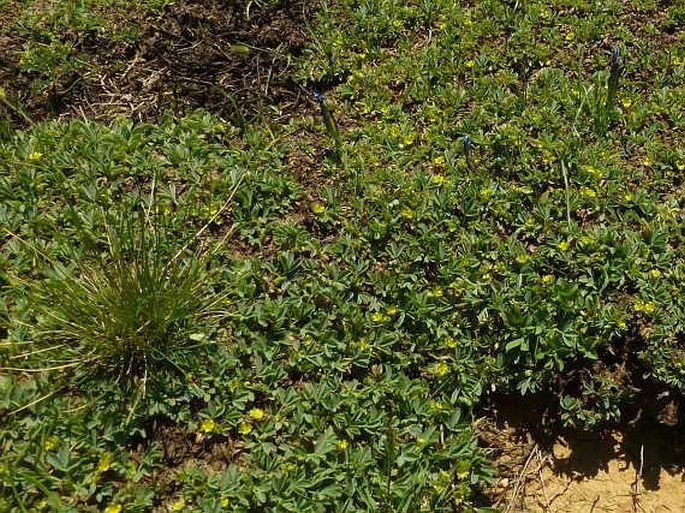Syn.: Potentilla cuneata Lehm., Sibbaldia semiglabra C. A. Mey.
Family: Rosaceae Juss.

Distribution: Scattered in mountains of northern Iran, northern Iraq, eastern, central and northern Anatolia and even the Caucasus. In Europe it grows on the Balkans – Albania, northern Greece (Kajmakčalan, Kiafa), Macedonia and westernmost Bulgaria close to the border with Macedonia. First known locality for Europe was in Galičica Planina, where also our pictures come from.
Ecology: It grows in snow beds and other somewhat damp places in alpine grasslands, usually on carbonates or other calcareous substrates, for example volcanic rocks in central Anatolia or schists in Greece. In the European part of the distribution area it grows in altitudes between 2000–2400 m. Flowers in June and July.

Description: Procumbent, suffruticose, mat-forming perennial plant. Stems are rooting, blackish-brown, more or less clothed with leaf remains. Leaves are ternate, forming rosettes at tips of stem branches. Leaflets subsessile, 5–10(–14) mm long, obovate-cuneate, with 3 apical teeth, appressed-pubescent. Flowers 2–5 in cymose inflorescence. Calyx lobes 4–5 mm long, triangular to broadly lanceolate, acute, appressed-pubescent. Petals 2–2.5 mm long, obovate, pale yellow, veins distinctly anastomosing towards the apex, stamens 5. Fruit is 1.5–2 mm long, ovoid, olive-green to blackish, smooth and shining achene.




These images were taken in Macedonia, Galičica, near Mt. Magaro (June 25, 2013).


